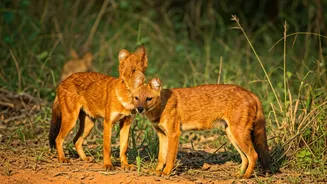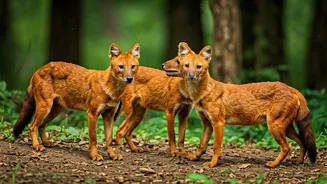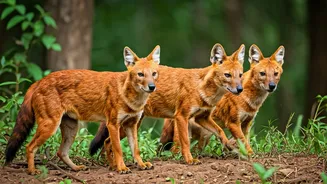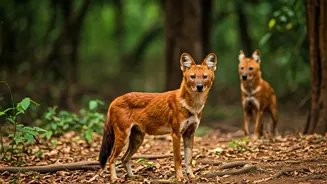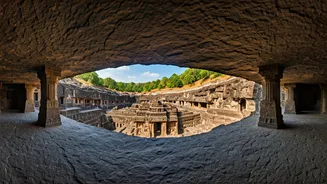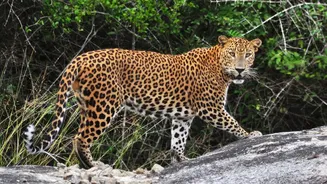Introduction to Dholes
The dhole, often called the Asiatic wild dog or Indian wild dog, represents a unique species that's classified as endangered. They are renowned for their
social structure, living in packs that can be quite large, sometimes exceeding 40 individuals. These canids, which are related to wolves, foxes, and jackals, thrive in various habitats, including dense forests, grasslands, and mountainous terrains across South and Southeast Asia. Their reddish-brown coat and bushy tail differentiate them, and these animals are essential to their ecosystem because they play a vital role in controlling prey populations. In the face of increasing threats such as habitat loss, hunting, and competition with other predators, the dhole faces several conservation challenges, and concerted initiatives are essential to ensuring its survival and ecological role.
Kanha National Park
Kanha National Park, located in Madhya Pradesh, offers a critical habitat for the dhole, providing extensive grasslands and dense forests. The park’s conservation strategies include extensive habitat management and anti-poaching initiatives aimed at safeguarding dholes. In Kanha, the dhole population thrives because of the park’s commitment to preserving its ecological balance. Visitors can often spot dholes hunting in packs, especially during the early mornings or late evenings. These packs are extremely social animals, working together to hunt prey such as deer and wild pigs. The lush, varied environment that includes sal and bamboo forests creates an ideal environment for dholes to flourish. Kanha's dedication to protection and conservation makes it a perfect example of wildlife management and preservation.
Tadoba National Park
Tadoba National Park, situated in Maharashtra, is a key habitat for the dhole. Tadoba is recognized for its thick forests, providing shelter and a hunting ground for these predators. Park authorities have implemented various conservation projects, including habitat restoration and anti-poaching patrols. The dhole population in Tadoba benefits from the abundance of prey species and the effective protection measures. Dholes often roam in well-defined territories, and their packs demonstrate a high level of cooperation. Tadoba is also known for its diverse wildlife, creating a complete ecosystem that supports a variety of species, including tigers, leopards, and various bird species. Visitors must respect and enjoy the natural environment while visiting Tadoba.
Bandhavgarh National Park
Bandhavgarh National Park in Madhya Pradesh is famous for its high density of tigers, but it is also home to dholes. The park features diverse terrains, from steep hills to grasslands and valleys, which provide shelter for dholes. The park's management has implemented strategies such as anti-poaching measures to ensure the dhole population continues to thrive. Dholes are an essential part of the food web, ensuring the balance of Bandhavgarh’s ecosystem. Visitors can witness the packs working together during hunts, often targeting species like sambar deer and wild boars. The presence of dholes in Bandhavgarh reflects the health of the park’s environment and the success of its conservation initiatives, making it a crucial sanctuary for wildlife.
Periyar National Park
Periyar National Park in Kerala, with its scenic beauty and diverse ecosystem, provides habitat for the dhole. The park's moist deciduous forests and grasslands contribute to the survival of the dhole population. Conservation initiatives at Periyar concentrate on protecting the habitat and preventing poaching. These efforts support the dholes by providing a protected environment. Dholes are social animals that live in packs, often collaborating during hunts. Visitors can see dholes near water bodies or in forest areas, which shows the park's vibrant ecosystem. The park's commitment to conserving its biodiversity contributes to the survival of the dhole and the health of the environment.


